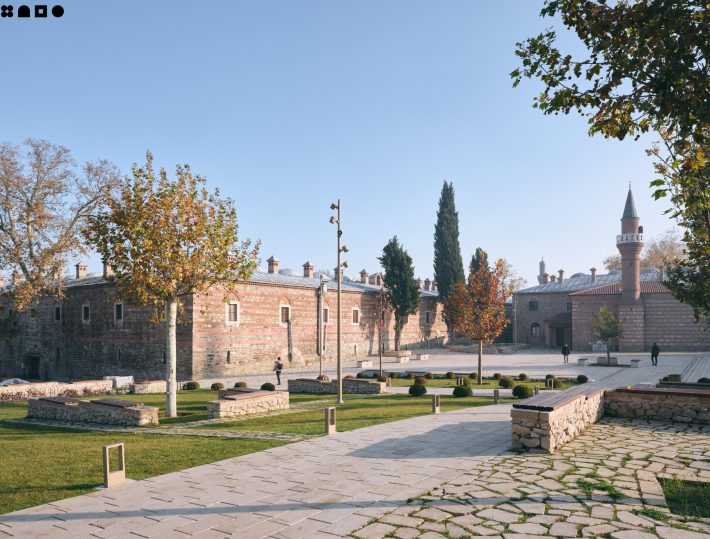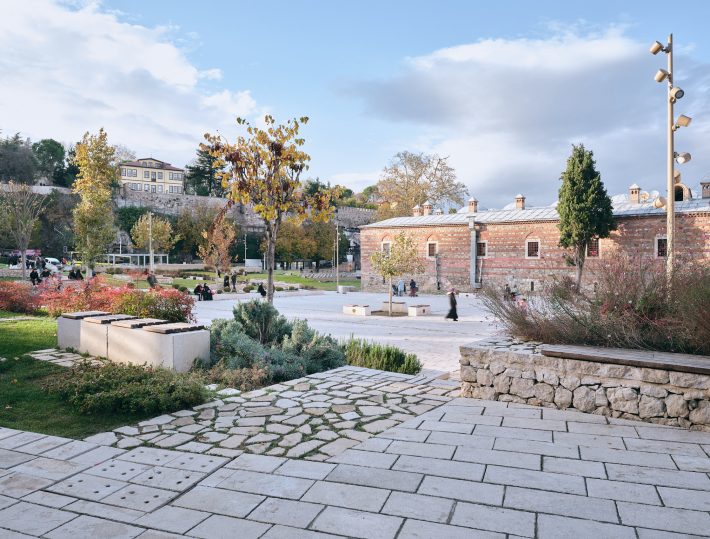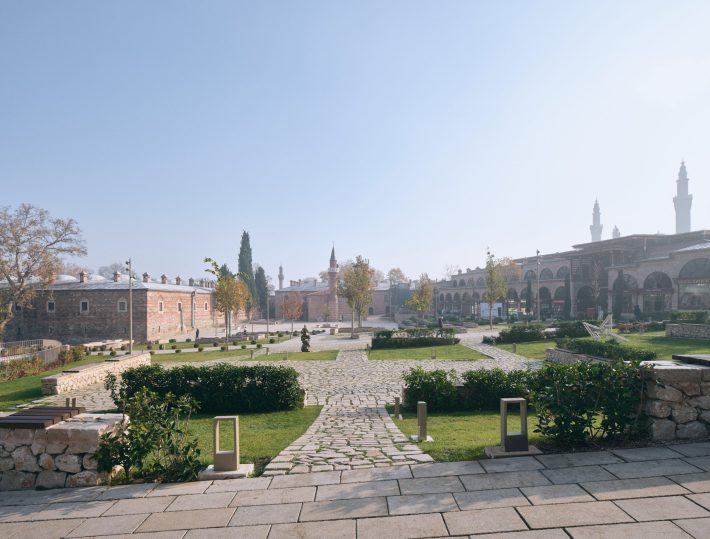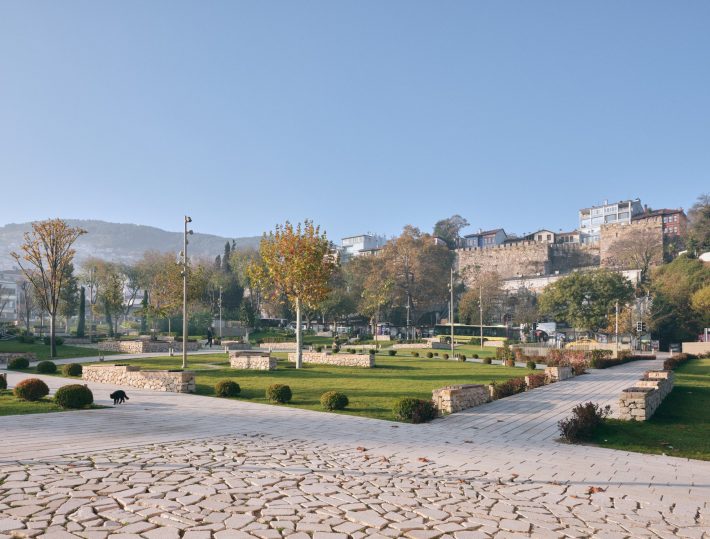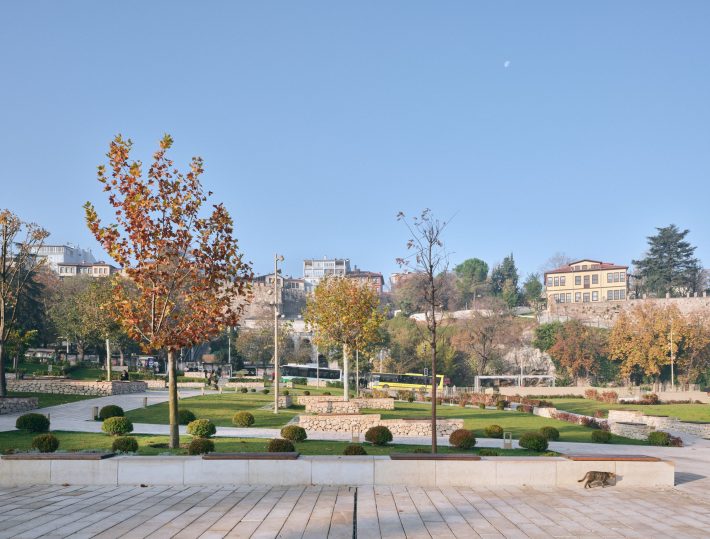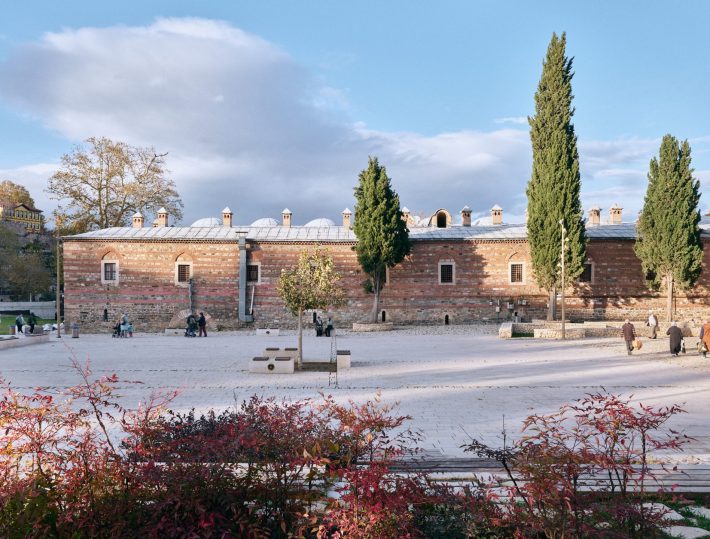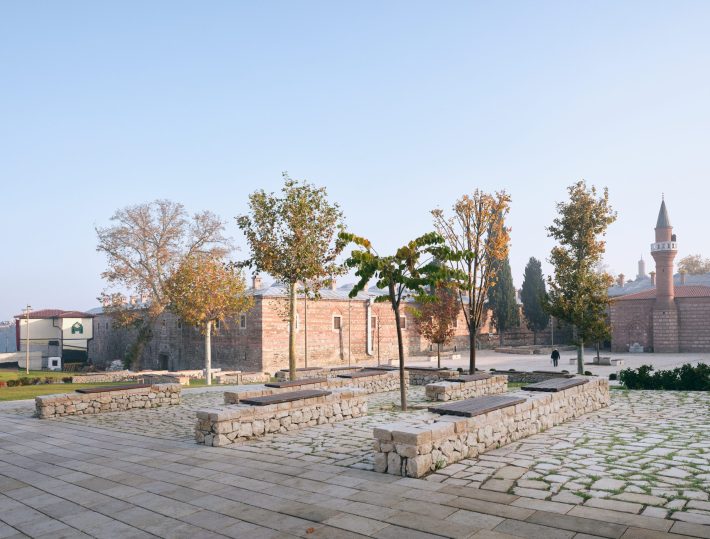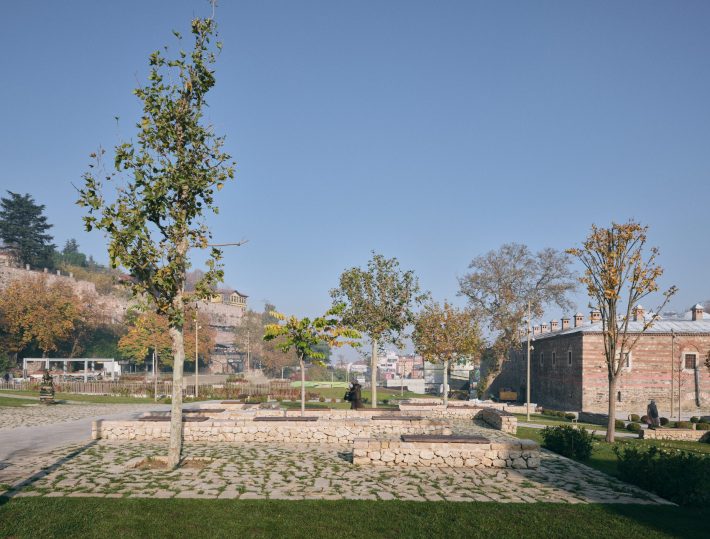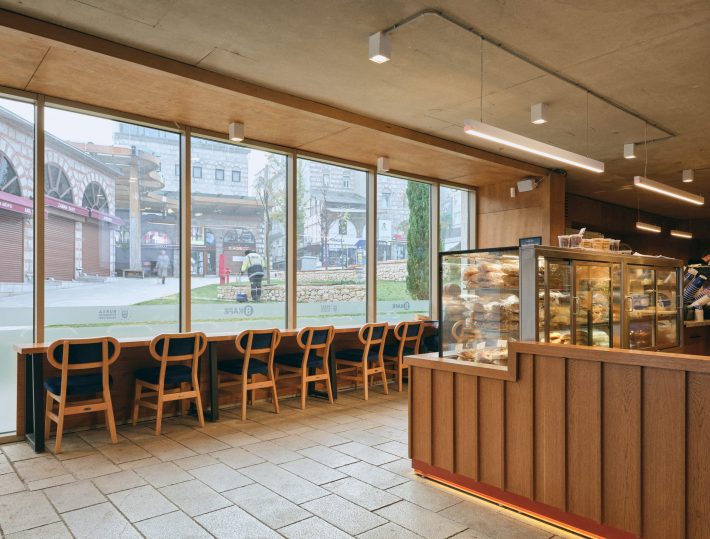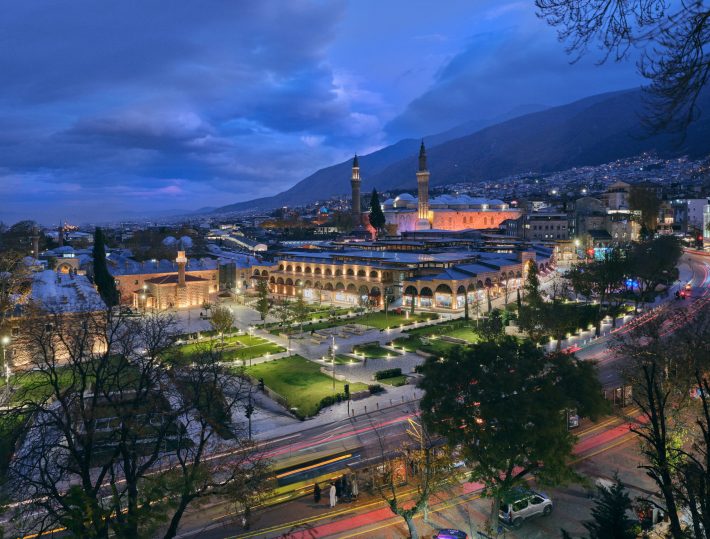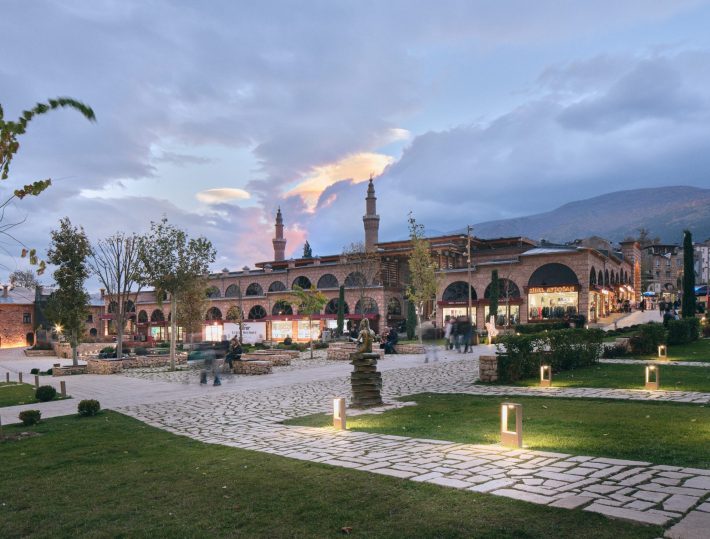The First Phase of the Bursa Hanlar District Urban Design Project, developed by Kantarcı Avcı Architecture (KAA) as a result of a competition, was designed through subtle interventions that respected the historical layers of the site and embraced its spatial dimensions and urban fabric. The Ottoman Empire began its expansive journey from Bursa, one of… View Article
The First Phase of the Bursa Hanlar District Urban Design Project, developed by Kantarcı Avcı Architecture (KAA) as a result of a competition, was designed through subtle interventions that respected the historical layers of the site and embraced its spatial dimensions and urban fabric.
The Ottoman Empire began its expansive journey from Bursa, one of the final stops along the Silk Road in Anatolia and a vital historical center. Due to its strategic location, the city has been influenced by both Asian and European cultures throughout history. Civilizations such as the Hittites, Lydians, Phrygians, Romans, Byzantines, Seljuks, and Ottomans have all left their mark on the city. Archaeological excavations in the “Hisar” district, now the city center, reveal that Bursa has been inhabited for approximately 8,500 years. In the Hanlar District, monumental structures such as hans (caravanserais), baths, mosques, and bazaars may seem rigid and geometric when viewed individually, yet their placement in the city follows a rather free pattern. This freedom has given rise to corner spaces, organic streets, sloping alleys, and small plazas—elements that together create the city’s unique urban dialogue.
Despite being included in the UNESCO World Heritage List and recognized internationally, this unique urban relationship has been weakened over time. Faulty zoning decisions led to the expansion of wide boulevards and the rise of monotonous apartment blocks, which ultimately disrupted the historical skyline and severed the connection between the Hanlar District and the Hisar. As building density increased, so did the demand for parking, and the once-organic historical streets became cluttered with vehicles. Over time, the area’s cultural and historical identity was eroded by commercial concerns, and registered heritage structures were repurposed or overwhelmed by shops and traffic.
After the area was opened to competition in 2020 and expropriation began in 2021, the design process for this shared heritage aimed to reintroduce its historical layers and restore its public value.
“Caravanserais, inns… these are the things that create the magic of ancient journeys… To join a caravan, to stay overnight in an inn… to meet for a night, part the next morning, and see the world with the hope it adds something to your life…” — Tanpınar, 1985
The project began with a deep effort to understand the Hanlar District, a vital segment of the city’s historic flow. Rather than inventing something new, the focus was on revealing the historical, cultural, and functional layers through technical means. Every component—stone, earth, greenery, streets, courtyards, walls, fountains—was considered not as isolated entities but as interrelated parts of a whole, each feeding into and completing the other. Notably, the stones used in ground construction were sourced from Söğüt, where the Ottomans first set foot, and brought to the site with minimal processing. These Söğüt and Bursa stones were integrated with flagstones unearthed during archaeological digs in the district, forming a meaningful composition.
Urban articulation was informed by historical maps and shaped by a strategy that sometimes filled in gaps, preserved absences, or integrated contemporary life experiences. The site’s steep topography necessitated a fragmented and scaled approach with small plateaus and terraces. It became clear that the seemingly free orientation and intersecting spatial pockets of the existing buildings were guided by the geography itself. Rather than writing a new narrative, the project aimed to complete the unfinished sentences of an existing one. Following the caravanserai courtyards, small urban courtyards and connecting alleys emerged, accompanied by centuries-old plane and linden trees descending from Tophane.
Three main plazas were developed, shaped by the natural landscape and designed to direct surrounding streets, seating walls, small structures, and amphitheaters. At the northern entrance near Cumhuriyet Street and in front of Pirinç Han, the most vibrant plaza—Pirinç Han Square—welcomes visitors from all directions, also connecting with Cemal Nadir Street. Behind it stands a traditional Turkish wooden house, repurposed as a tourist welcome and exhibition center, conveying the history of the area and its cultural value.
To address chronic parking problems and minimize vehicle congestion, an underground parking facility was built beneath Pirinç Han Square, carefully situated along the footprint of demolished structures so as not to encroach on historical layers. This intervention supports full pedestrianization of the area.
Moving deeper into the site, Ipek Han Square—framed by the walls of Pirinç Han, Ipek Han, and the Coppersmiths’ Bazaar—becomes a tranquil urban courtyard in the heart of history. The nearby Sarıca Sungur Mausoleum and 18th-century archaeological ruins offer quiet reflection for visitors. The site’s varying elevations create a dynamic spatial experience—sometimes a seating wall, other times a stairway, an amphitheater, or a sloped path leading to a square.
The third and final main square, Çarşı Square, lies at the exit of the Coppersmiths’ Bazaar. Designed to relieve pedestrian density, this plaza functions as a pause space, supported by nearby park areas and rest zones. A small, partially buried building accommodates public amenities such as restrooms, with minimal visual impact and maximum accessibility. Water features and fountains placed in each square emphasize the soothing effect of water in public space. In Bursa, water has been so vital to the city’s development that Evliya Çelebi once wrote: “In short, Bursa is made of water.”
One of the project’s most important objectives is to restore the connection between the Hanlar District and the Tophane and Castle areas, strengthening the city’s historical continuity. While demolition was a significant part of this process, the main goal was to re-establish a sensitive relationship across the valley, using small-scale structures, layered topography, and pedestrian routes to reconnect the two sides.
As the site’s narrative was completed and its context re-established, the journey of stones from Söğüt to Hanlar, the flowing greenery from Tophane, and the integration of Bursa’s native trees and plants created a cohesive historical landscape. The former caravanserai courtyards now guide the urban layout, with each element—plazas, water features, plantings—working in harmony to reinforce the site’s integrity.
Mindful of the global climate crisis, the project integrated sustainable design principles. Natural stones from local quarries were used to minimize transportation-related carbon emissions, and the vernacular approach helped prevent heat island effects. Most surfaces were laid without concrete, ensuring permeability and reducing flood risk from the site’s natural slope. These living surfaces, which are green in spring and turn golden in autumn, reflect the seasonal rhythm most organically.
Bursa Han Region Urban Design
Due to its strategic location, Bursa has been influenced by both Asian and European cultures throughout history. The city bears the marks of Hittite, Lydian, Phrygian, Roman, Byzantine, Seljuk, and Ottoman civilizations. Archaeological studies conducted in the city’s center, now known as the Hisar region, reveal that its history dates back approximately 8,500 years. In the Hanlar Region, a magical urban dialogue emerges from the interplay between structural rigidity and organic fluidity. Individually, hans, baths, mosques, and bazaars stand firm and geometrically resolute. Yet their seemingly free arrangement within the city gives rise to corner nooks, meandering organic streets, sloping paths leading to intimate neighborhoods, and small squares at the intersections of roads, all key elements in shaping this enchanting dialogue. The unique and invaluable urban articulation established by these historical structures serves as the foundation of our approach. Drawing insights from old maps and historical readings, we began crafting a composition that sometimes fills voids, sometimes preserves absences as silent reminders, and sometimes blends them with the beauty and narratives of contemporary life. As we delved deeper, we realized that the site’s steep topography inherently fragments the area into smaller, human-scaled terraces and leads us to small plateaus. This revelation highlighted that the seemingly free layout of the existing structures—their varied orientations and the intermediary spaces they form—was guided by the geography itself. Thus, rather than writing a new text, our work took on the nature of completing the unfinished sentences of an existing narrative. Small urban courtyards emerged, following the han courtyards, connected by pedestrian pathways, and complemented by plane trees and lindens that greet the greenery cascading down from Tophane.

